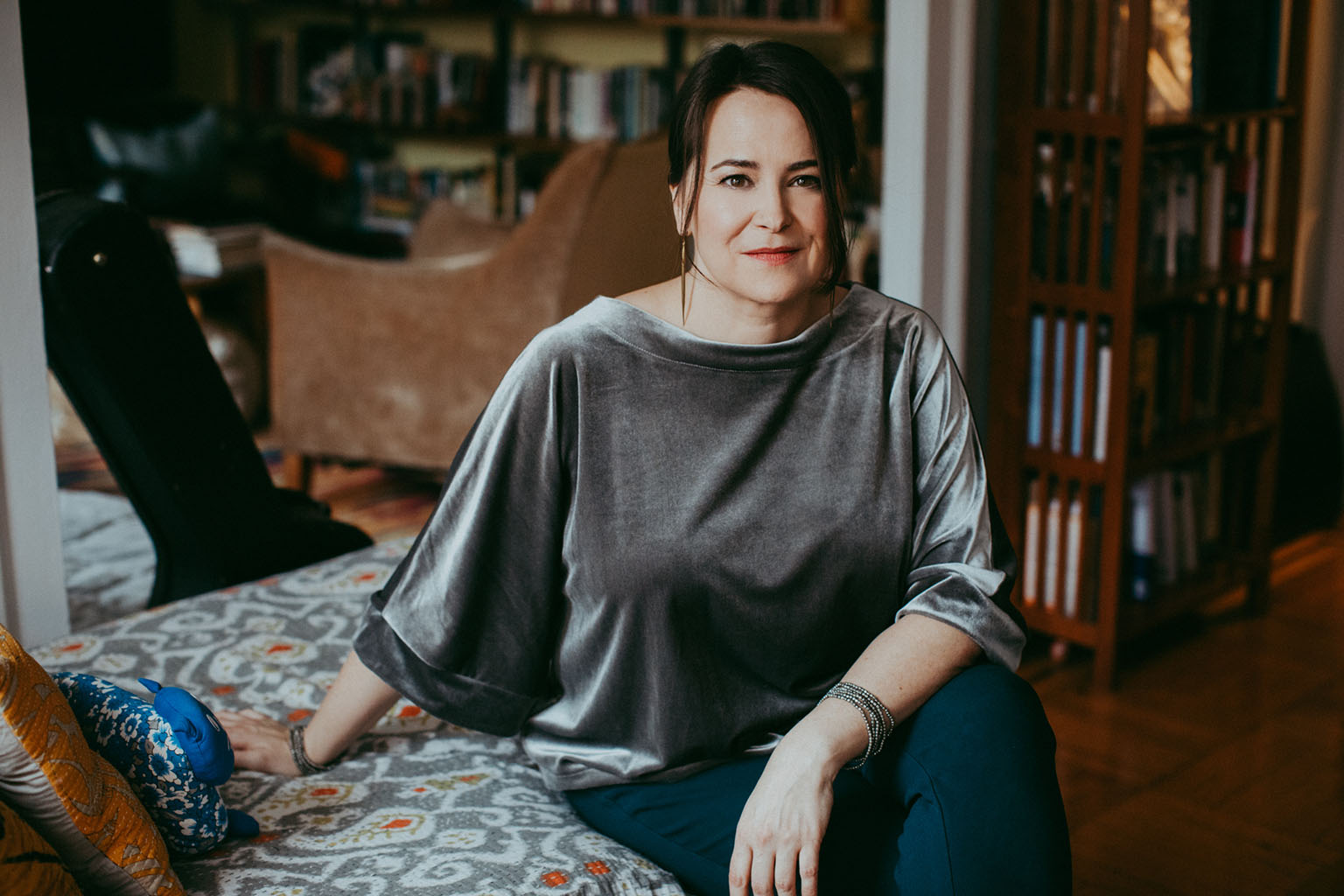Part book review, part impressionistic scribblings on the joys of reading and the struggles of carving out time in which to do it, #ABookishYear is a weekly dispatch from the front lines of an intellectual journey spanning fifty-two tomes.
Dispatches from the Pantheon
By Roxanne Fequiere
Have you ever seen The First Monday in May? It’s a documentary chronicling the inner workings of The Metropolitan Museum of Art’s Costume Institute as they put together 2015’s China: Through the Looking Glass exhibit and accompanying Met Gala. There’s a scene that I return to often near the end of the film: after a long montage of A-list celebrities making their way into the event and through the exhibit, the camera cuts back to the red carpet as the opening strains of Nat King Cole’s “Stardust” begin to play. Rihanna steps out before the crowd, resplendent in an intricately embroidered, brilliant goldenrod cape with fox fur trim by Guo Pei.
The train extends several feet behind her, and her blunt auburn bob is topped with a glinting golden headdress, jewel-studded and swirling about in shapes reminiscent of the flora adorning the cape below. As she turns to give her best angle to the sea of cameras snapping away, each glance cast over her bare shoulders alternating between coquettish and defiant, the scene slows so that the viewer can drink in every detail—the perfection of her winged eyeliner, the seven, eight, nine, strings of her beaded gold necklace.
And then the narration begins. “Ugh, I love a girl from humble beginnings who becomes a big star,” says Andre Leon Talley from his spot further down the red carpet where he waits to interview Rihanna, rolling his eyes to the heavens and shaking his head in what appears to be an expression of ecstasy and disbelief. “It’s like the American dream, that’s how you do it.” Now in slow motion again, the camera pans the length of the cape close-up, as Talley continues: “And just keep going with the—‘I want more train and more train! I want drama!’” he says, his voice getting louder as Rihanna inches closer.
“This is the black Frozen!” he shouts. “Queen of the night!” And then, when we cut back to the newly crowned queen, her demeanor has shifted. For a brief moment, she grins broadly and giggles, telegraphing pure and giddy joy. It’s a look of unbelieving glee, as if she’s just realized that a dream she never even dared to have somehow just came true. It’s a slickly produced documentation of an international superstar’s high-fashion entrance to a social event that charges upwards of $30,000 a ticket and yet—it’s absolutely delightful. The moment’s excess is at once heady and humorous, and you can almost identify with that “girl from humble beginnings” reveling in the spotlight that now beams brightly on her, against all odds.
I kept thinking about that scene as I devoured Pat Cleveland’s memoir, Walking with the Muses. The author has been lighting up runways for decades with her animated demeanor and tendency to break into dance—look her up on YouTube, it’s the antithesis of the sulking, dead-eyed stomp you see at fashion presentations these days—and she brings that same energy to the story of her own life. Reading the book feels a bit like becoming engrossed in a lengthy fairy tale: enchanting and fantastical, with sharp pitfalls and plot twists, and a heroine that rises above it all to find her happy ending.
Since the plucky heroine herself is doing the storytelling, there are times when her relentlessly positive spin seems out of step with more somber subject matter. The good times seem to be rendered like a richly detailed mural; the bad times, like a rushed snapshot. At one point, while shooting a film in Acapulco, Cleveland returns from a night out and finds her roommate Agneta, a fellow model, being raped in their shared hotel room. She manages to escape the scene and races to her manager’s villa to seek assistance and finds no one there. “Feeling defeated,” she writes. “I sank into a lounge chair, where sleep overtook me.” She later notes that she never saw Agneta again in person, but that she went on to be a successful model, although “something even more terrible than rape awaited her.” She fell—or was pushed—out of a window at the age of 25.
Similarly harrowing events in her Cleveland’s own life are described in the same clipped manner. When it comes to darkness, it’s just the facts, light on introspection. Still, there’s a crackling, wry undercurrent that reveals itself unexpectedly, just when you may think she’s veering too far into Pollyanna territory. Though she shares her story of meeting Bill Cosby from the point of view of a starstruck teen, it’s a bit jarring to go there with her knowing what we know now. When she catches him making out with one of her fellow models in his backyard, with his wife and newborn child just a few yards away in his living room, her sixteen-year-old self is shocked and dismayed. Her current self, however, notes, “In light of the later accusations against Bill, the dalliance he had with Theresa seems almost respectable.” When she describes a mean teacher who picked on her and was eventually fired, it seems like just another instance of things magically falling into place, and then: “Do you know how hard it is to fire a tenured teacher at a New York City public school?” she writes, and you can almost hear the insistence behind it. “Believe me, I wasn’t the only student thrilled to have her gone.”
If you can think of a boldface name of the ‘60s and ‘70s, there’s a chance that they make an appearance in this book—Muhammad Ali, Andy Warhol, Marisa Berenson, Diana Vreeland, Stephen Burrows, Halston, Bill Blass, Anjelica Huston, Karl Lagerfeld, Warren Beatty, Jack Nicholson, Mick Jagger. As a young child, Cleveland leapt about Katherine Dunham’s studio, students like Marlon Brando and Sidney Poitier taking instruction nearby. Andre Leon Talley makes a brief cameo, too. Her interactions with these personalities are the stuff of legend, but all throughout, whether Cleveland is scraping by in East Harlem or living large in Paris, she writes with an unwavering admiration for clothing above all else. An appreciation passed down from her mother, a sharp dresser, talented seamstress, and acclaimed painter, Cleveland learned early on about the transformative potential of clothes, and her reverence served her well. After all, it was one of her own custom ensembles that first got her noticed by a Vogue editor on the street. “This unsought gift was a turning point for me,” Cleveland writes. and she receives each subsequent unsought gift—and misfortune—with determined grace and joy. Perhaps the Pollyannas of the world have a skill that we would do well to cultivate.
Roxanne Fequiere is a New York–based writer and editor who might just make it after all.
Featured Book
Featured Documentary
The First Monday in May
watch
Follow along with Roxanne's #abookishyear here.
Return to
FEATURED INTERVIEWS









